
Meet the tauhou
The lean, green Energy-Food-consuming machine is prolific in gardens right now. What do you know about them?
Whether you know them as the tauhou, silver eye, wax eye, white eye, or (less commonly) the blight bird, chances are you’ve seen these little guys flitting around your backyard. If you have a bird feeder, the chances are even higher, especially in the cooler months when they often arrive in flocks to devour Energy Food, nectar and fruit. At an average length of 12cm and weighing in at just 13g, the tauhou is a small and well loved addition to the New Zealand bird population.
Where did they come from, where do they go?
Māori gave them the name ‘tauhou’ meaning 'new arrival'. Originally from Australia, the tauhou has been in Aotearoa since the 1800s and is therefore not considered an endemic species. It was clearly a good move for the little songbird though as it is now one of our most abundant native species, commonly spotted in a variety of different environments from sea level up to 1,200m altitude, including on many of the outer islands.
In winter, they tend to move in flocks while actively foraging for food in parklands, woodlands, suburban gardens, forests and scrublands. The tauhou announces its presence with high-pitched melodious calls as well as trills and warbles, often with many birds all calling at once.
What does a tauhou look like?
A similar size to a sparrow, with olive green plumage and distinctive white edged eyes, the tauhou has a fine tapered bill and tends to get about with quick, flitting movements. There is not an obvious difference between males and females, but the male does have slightly brighter plumage.

What do they eat?
Omnivorous creatures, tauhou nibble up small insects, fruits and berries, as well as being eager nectar sippers. When it comes to feeders, they are keen on snacks with a high fat content. While they have been known to damage orchard fruits, they are also good at nipping up aphids and codling moth caterpillars, all the while doing great work in pollinating some of our native trees.
What about breeding?
A monogamous species, the tauhou are good at sharing the load when it comes to childrearing. They nest across spring and summer and tend to lay two or three clutches of eggs per nesting season. Nests are built by both males and females in the outer branches of shrubs and trees or in ferns, using mosses, lichen, small twigs and even spiderwebs. Both sexes take turns at sitting on the nest, with incubation taking around 10 days, and both feed the fledglings.
How do I see a tauhou?
Appearing everywhere from farmland to native forests, and wetlands to urban areas, it shouldn’t be too challenging to coax a tauhou into your backyard: a well placed feeder out of the reach of predators with an offering of Energy Food, nectar or fruit – and perhaps a little patience – and you are bound to see these cuties arrive in droves.
Remember that hygiene is essential for keeping your visiting garden birds healthy so keep those feeders clean. Don't forget to keep a clean and safe water source available too as birds need it for a range of reasons.
Related Products
Related Posts
Meet the tauhou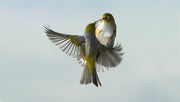
The lean, green Energy-Food-consuming machine is prolific in gardens right now. What do you know about them? Whether ...
Grow your own native plants for native birds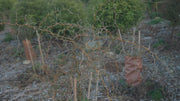
Adding a kōwhai or a kapuka to your garden is a great way to bring in the birdlife. Luckily, both these native specie...
Are you all ears? How to recognise five common New Zealand bird calls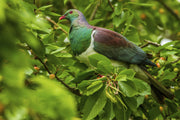
Can you pick a tūī from a korimako? Would you know a rifleman if you heard one? Here are five commonly-heard songs fr...
How to feed your garden birds if you want to attract and support native species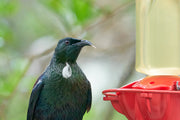
Shutterstock/KingRobert Daria Erastova, University of Auckland; Ellen Hume, University of Auckland; Josie Galbrait...
How to clean a bird feeder (and why it is so very important that you do)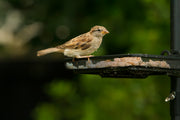
Let’s face it – birds are sloppy eaters. All that flapping, hopping and hanging at the feeder means a lot of contact ...
Seeds of thought - How wild birds grow forests
We’re taught from an early age that birds need trees to live in. But so too do trees often need birds to survive… ...









